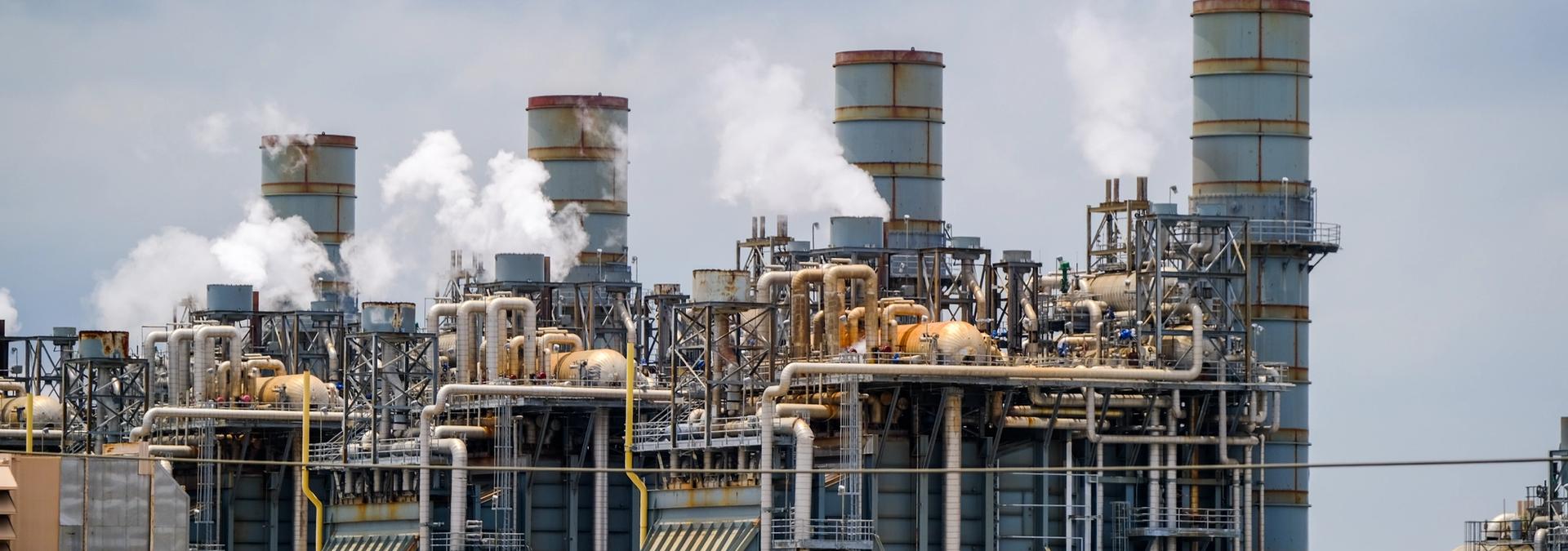
Texas can't keep hoping individual actions will solve Houston's industrial-sized ozone problem
The largest sources of ozone-forming pollution in Houston are the oil, gas and chemical facilities clustered around the Ship Channel.
During the long, hot summers, Texans should be able to get outside and enjoy themselves. In Houston, that can mean biking the trails along the bayous, barbecuing at MacGregor Park and cooling off at the Emancipation Park pool.
In Houston, though, summers also coincide with ozone season. The lung-burning gas threatens everyone’s health, even forcing some of the region’s most vulnerable residents to stay inside altogether. Ozone has been an enduring problem that climate change is making worse, as summers grow even hotter and longer, and metropolitan regions add more people—and their vehicles. “It’s a significant health hazard,” says Dr. Lisa Doggett, president of Texas Physicians for Social Responsibility. “It’s especially concerning for people with underlying conditions, but it poses a risk to all of us.”
Ground-level ozone pollution, or smog, forms when volatile organic compounds (VOCs) and nitrogen oxide (NOx) pollution from smokestacks and tailpipes cook in the heat and sun. Federal standards required by the Clean Air Act are designed to keep pollution low enough to protect everyone’s health, but Houston has never met them, and people have suffered. “Researchers have found that current levels of ground-level ozone are likely responsible for tens of thousands of ER visits and hospitalizations, as well as thousands of premature deaths each year in the U.S,” says Dr. Doggett.
Houston’s ozone problem goes from bad to worse
Houston’s ozone problem, right now, is considered “serious.” Technically speaking, the eight-county region is designated as being in “serious nonattainment” of the Clean Air Act's National Ambient Air Quality Standards, or NAAQs [say “Nacks”], for ozone. The worse the designation—they drop from marginal to moderate, serious, severe and extreme—the more that states are required under the law to do to improve.
Unfortunately, Texas hasn’t improved. This spring, the American Lung Association’s annual State of the Air report gave Houston another “F” for ozone. Now, the Environmental Protection Agency is considering downgrading Houston (as well as Dallas) once more to “severe” for ozone. This would require Texas to develop a new plan that will show EPA the pollution is under better control.
A “severe” designation will force Texas to take actual ozone action. You can tell the EPA it's time to act by adding your name to our petition or writing yourself by June 13.
The Texas Commission on Environmental Quality, or TCEQ, would be the state agency responsible for the plan. Right now, to reduce ozone pollution, their webpage encourages Texans to carpool, walk, bike, properly maintain vehicles and take other individual actions. On Ozone Action Days, when levels are expected to be especially dangerous, TCEQ emails alerts that urge Texans to “take your lunch to work.”
Even though these individual actions can add up, they’re clearly not doing enough. “We basically have a state agency that doesn't want to rock the boat,” explains Victor Flatt, the Dwight Olds Chair in Law at the University of Houston Law Center. “TCEQ’s culture is one of doing as little as possible. Voluntary actions — pack your lunch, bike — aren't getting us there and aren’t going to be sufficient.”
What ozone action must look like
The redesignation of Houston to “severe” will require TCEQ to do much more to improve air quality and protect everyone’s health. The new State Implementation Plan, or SIP (say "Sip,") will have to include certain requirements: The Clean Air Act mandates that “severe” regions adopt stronger standards for the main ozone-forming pollutants, VOCs and NOx. Any new industrial development or expansion would have to offset a greater ratio of their pollution to achieve a net-positive impact.
Beyond what’s required, though, TCEQ could implement any number of other measures. They could halt proposed freeway expansions. They could order commuters to stay home to work and certain facilities to stop operating on certain days. “In theory,” Flatt says, “TCEQ can do anything.”
In Colorado, for example, where EPA is looking to downgrade Denver as well from “serious” to “severe,” the state is proposing initiatives to electrify buses and transportation and working to close polluting coal plants.
TCEQ’s plan for Houston can’t continue hoping individual actions will solve the region’s industrial-sized problem. The state’s new plan for ozone needs to start targeting the largest sources of VOCs and NOx in the region, which are the oil, gas and chemical facilities clustered around the Ship Channel. With more effective control of this pollution and coordinated investments that support safe, convenient biking, walking and taking transit and full electrification to reduce the second-largest source, a transportation system of diesel-fueled trucks, trains and ships and personal vehicles, Houston can improve. Ozone shouldn’t keep us from enjoying our city. With a real plan in place, it doesn’t have to.
Fraser is a graduate student at Georgetown University’s McCourt School of Public Policy, where she’s pursuing her master’s degree in public policy. You can find her on Twitter at @cathwfraser.
STAY UP TO DATE
The quality of our newsletter is considered satisfactory and poses little or no risk.
SUBSCRIBE

